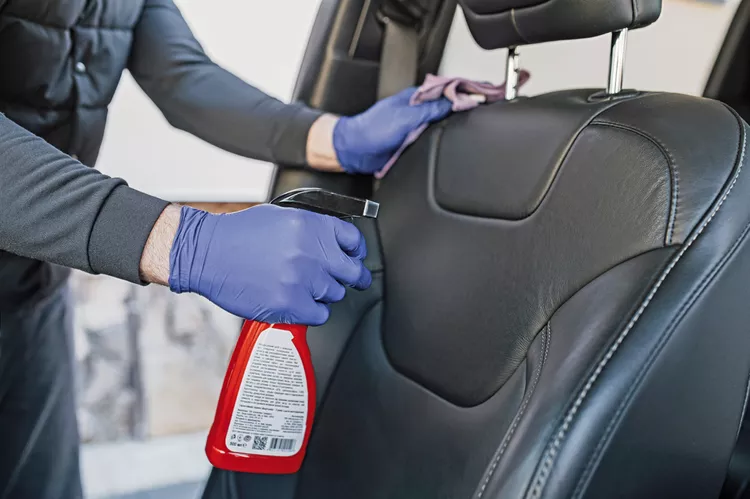Kyle Turner: The Rabbitohs legend who never forgot his roots

How to clean car seats at home
Keeping your car’s seats clean is essential for maintaining its appearance, hygiene quality, and overall comfort. Whether you have leather, fabric or vinyl seats, regular cleaning helps prevent stains, odours, and wear over time. In this article, you will learn how to clean car seats using tools and products that are easy to find in Australia.
1. Identify your car seat material
Before you start cleaning, you should first find out the kinds of seats you have. Different techniques are needed, depending on the kind of material, to avoid damage.
- Fabric seats: Usually found in most cars, fabric seats readily absorb first and spill.
- Leather seats: Found in premium and high-end cars, leather seats need particular maintenance to avoid breaking.
- Vinyl seats: Although vinyl seats are durable and easy to clean, improper maintenance could cause them to become sick.
To make sure you apply the correct cleaning techniques, consult the material information found in your car’s manual.
2. Gather your cleaning supplies
It makes a big difference to make use of the suitable products. You should have
- A vacuum cleaner with a brush attachment
- Microfibre cloths
- Soft-bristled brush
- A bucket of warm water
- Fabric or leather cleaner
- Baking soda (for odour removal)
- White vinegar (for tough stains)
- Rubbing alcohol (for ink or grease stains)
Avoid cleaning with strong chemicals like bleach or ammonia-based cleaners since they could ruin the material.
3. Vacuum the seats thoroughly
Start by vacuuming the seats to clear any trash, crumbs, and loose dirt. Examine for:
- Cracks on the seat where dirt gathers
- Benevolent cushions under the seats
- Stitching and seams
One can remove dirt with a brush attachment without ruining the upholstery.
4. How to clean fabric car seats
Fabric seats often stimulate smell and stains, hence they need careful cleaning.
Treat stains first
- For spills and stains from food or beverages: Mix equal parts white vinegar and warm water. Dab the stain with a microfibre cloth and lightly scrub.
- For grease stains: After spreading baking soda over the damaged area, wait 10 to 15 minutes.
- For ink stains: Use rubbing alcohol on a cloth and gently wipe ink spots until they lift.
Deep clean with a fabric
- Equally, cover the seat with spray fabric upholstery cleaning solution.
- Gently scrub using a soft-bristle brush in circular movements.
- A moist microfiber cloth helps remove extra cleaning from the surface.
- Leave the windows open to let the seats dry completely.
5. How to clean leather car seats
Leather seats require special care to help stop cracking and fading.
Remove surface dirt
- Use a microfibre cloth to wipe away dust and trash.
- Avoid using excessive water, since too much moisture could damage the leather.
Use a leather cleaner
- On a soft cloth, dab a little leather cleaner.
- Working on stained areas, carefully circle the cleaner.
- Excess cleaning can be wiped away with a dry cloth.
Condition the leather
- After cleaning, apply a leather conditioner to maintain flexibility and prevent cracks.
- Use sparingly, then polish with a dry cloth.
6. How to clean vinyl car seats
Vinyl seats are low-maintenance but require proper care to avoid becoming sticky or cracked.
Wipe with mild soap and water
- Add a few drops of dishwashing liquid to warm water and stir gently.
- Dip a cloth in the solution and wipe the seats.
- Use a microfibre cloth to dry the surface and prevent streaks.
Remove tough stains
- To remove stubborn stains, use a mixture of white vinegar and water.
- Use a little rubbing alcohol to gently eliminate sticky residue.
Apply a vinyl protectant
Applying a UV protectant helps to keep vinyl chairs flexible and stops sun damage since they can break under heat.
7. Dealing with odours in car seats
If your seats still smell, here are some fast fixes:
- Baking soda: Over fabric seats, liberally sprinkle; let sit for a few hours before vacuuming.
- Activated charcoal: Under the seats, slide a tiny bag filled with activated charcoal to progressively absorb smells.
- White vinegar: To eliminate smells, toss white vinegar into the basin in the car overnight.
8. Drying the seats properly
After cleaning, the seats have to be completely dry to stop mildew and mould development.
- Open the automobile windows to increase airflow.
- Park the car in direct sunlight if at all feasible to provide the fastest drying time.
- The drying process can be accelerated with a low-setting fan or hairdryer.
Preventing future stains
Regular maintenance lets you have perfect automobile seats:
- Weekly dust and dirt removal vacuuming.
- Using seat covers shields from wear and spillage.
- Quick cleanup of spills helps to prevent stains from settling.
- Covering leather products or furniture will help with future cleaning.
- Try not to have dinner in your car with clear crumbs and stains.
Conclusion
Regular cleaning of your car seats increases their lifetime as well as the appearance of your car. With the correct techniques and products, maintaining the lovely and fresh condition of your chairs is quick and easy. These suggestions can help to guarantee that your car’s interior stays in great shape.

